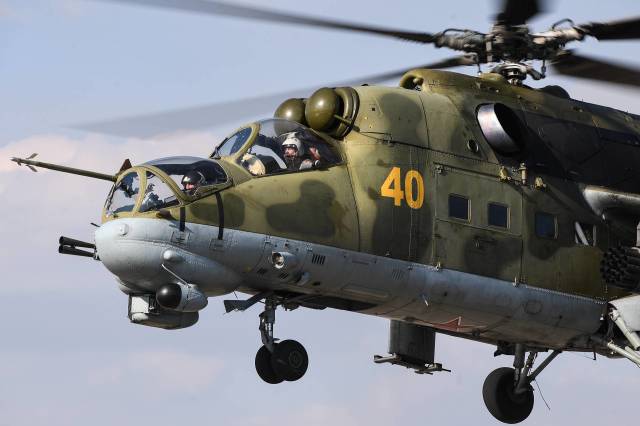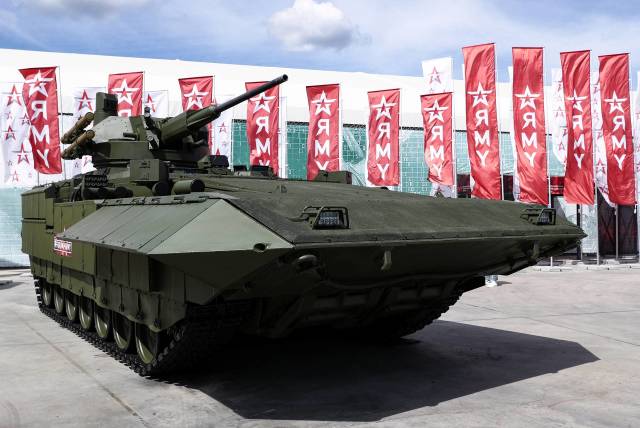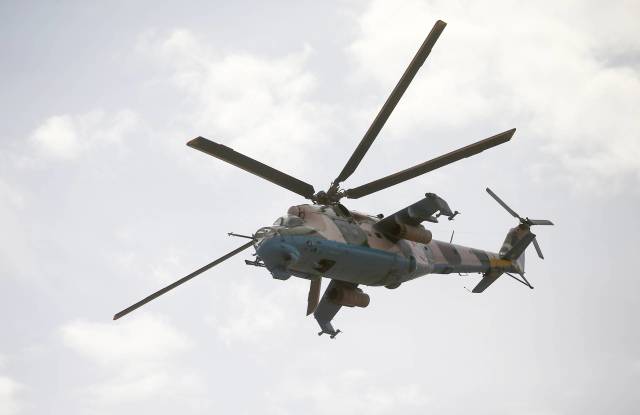Dmitry Litovkin — about the modernization of the Mi-24P, which has repeatedly proven itself in combat
40-year-old Mi-24P machines are returning to service. In military circles, they are called "Crocodile" — helicopters built according to an airplane scheme, armored and extremely dangerous because of their striking capabilities. In the presence of more modern Mi-28N and Ka-52, as it turned out, there is no alternative to these monsters. And it's not at all that we lack new attack helicopters. Simply, as time shows, the solutions implemented by the designers of the company "Mi" are so ahead of the situation that it is impossible to abandon them even now. Look at the Americans. They returned the F-15 fighter to service, which, it would seem, had already been buried with the arrival of a new, fifth generation of F-22 and F-35 machines. In the 2020 budget, the Pentagon is ready to allocate about $ 1.2 billion for the purchase of "oldies".
Patent appearance
The reason to remember about the Mi-24 was the patent of the Russian Helicopters company for a new look of a helicopter with the index "P" — cannon. According to the document, the machine is a deep modernization of the Mi-24P helicopter. It is planned to equip it with a twin-engine power plant, a digital flight and navigation complex and an armament complex with an observation and sighting complex with the ability to work at any time of the day and guided missile guidance.
In addition, the new transport and combat vehicle will be equipped with an on-board defense system and sensors for detecting external threats, which will be placed on the external pylons of the wing consoles. The helicopter will also receive a system for ejecting false thermal targets to counter man-portable anti-aircraft missile systems. It is possible that the pilot's helmet will be equipped with night vision goggles, and the external and internal lighting equipment will be adapted to the use of such glasses.
Actually, nothing incredible. There is a combat apparatus tested by all possible wars, and there is a decision to modernize it. In the case of both armored vehicles and aviation, the most expensive thing in the car is the body. If the tank was not damaged during the military conflict, then its armored capsule has served for at least 50 years. The same applies to airplanes. And to put a new engine, transmission and electronics inside is the Kulibins' business. Actually, Americans who are disappointed in their fifth-generation F-22 fighter are following this path. By 2030, it is planned to write off all Raptors and upgrade the fleet, including a more "clear and simple" F-15 in the form of an upgraded version of the F-15EX.
The Chief of Staff of the Air Force, quoted by Air Force Mag, Charles K. Brown, says that his main priority is to reduce the model range of combat aircraft from seven to five aircraft. Only the F-35A, F-15EX Eagle II, F-16 (or its possible replacement) and NGAD (a promising next-generation air dominance platform) plus a reduced fleet of A-10 attack aircraft that have undergone conversion and modernization should remain in the Air Force. The entire fleet of F-22 Raptor in the amount of 186 units is subject to reduction. By 2030, no more than a hundred NGADS will replace this fleet.
This is an example of a rational attitude to the issue of maintaining the current fleet of aircraft — vehicles that are really capable of performing combat missions. In this series, the Mi-24P is one of the favorites. Over the years, such machines have produced as much as 3.5 thousand .
Not a trembling "Doe"
The Mi-24, according to the NATO codification — Hind (from the English "doe"), is called "Crocodile" in the Russian army. One of the reasons for this is the fuselage of the helicopter. As a rule, all cars of this type are square boxes with a propeller, and the Mi—24 has an elegant, elongated shape, more like an airplane.
The basic modification of the Mi-24 became one of the world's first specialized combat vehicles. The aircraft was originally designed for fire support of troops on the battlefield, landing tactical landings, performing transport functions. In fact, they created a flying infantry fighting vehicle with armor and fire damage capabilities like a tank. The helicopter was created under the B-24 index at the end of the 1960s in the experimental design bureau of the Moscow Helicopter Plant (now the Moscow Helicopter Plant named after M.L. Mil JSC as part of the Russian Helicopters holding). The development was carried out under the leadership of General designers Mikhail Mil and Marat Tishchenko, chief designer Vyacheslav Kuznetsov.
The Mi-24 is designed according to the classical single-rotor scheme with a five-bladed carrier and three- or four-bladed (depending on the modification) tail screws. It has two gas turbine engines, a wing with a negative transverse angle (to improve lateral stability at high speeds), a tricycle landing gear with a nose rack (in some modifications, the landing gear is retracted in flight). The crew is two or three people, depending on the modification. The gunner-operator and the pilot are placed in an armored sealed cabin one behind the other, the flight mechanic — in the cargo cabin in the central section of the fuselage.
jpg"> |
| Mi-24 helicopter. |
| Source: Kirill Kukhmar/TASS |
Payload — up to eight paratroopers or four wounded on stretchers, or from 1.5 to 2 tons of cargo. The maximum take—off weight of the machine is 12 tons, cruising speed is 240 km / h, maximum speed in horizontal flight is 300 km/h. The practical ceiling is 3 thousand. The helicopter has a built-in rifle and cannon armament. At six points under the wing, it can carry suspended weapons — containers with machine guns or grenade launchers, guided and unguided missiles, aerial bombs.
Dueling law
The patent of Russian Helicopters focuses on the artillery version of the machine. Judging by the drawing, the designers, in fact, do not offer anything new — a bow, rotary artillery installation, like the Mi-28N. Earlier on the Mi-24, the gun was on the left side. And on the other hand, why not fantasize about what kind of gun it is.
The fact is that it is not the first year that Russian gunsmiths have been promoting the 57-mm remotely controlled uninhabited combat module AU-220M of the Uralvagonzavod concern to the troops. This installation is one of the most promising developments of the domestic military—industrial complex and will enter service with the Russian army in the near future. It has already been adapted on the BMP-3 — "Derivation-Air Defense", on the heavy T-15 Armata BMP, they are preparing to put it on airplanes and small displacement ships.
"The key feature of the development is its versatility: the AU—220M can be either put on the chassis of an IFV or APC, or placed on ships or used in a stationary version. I am sure that this module has every chance to become a bestseller on the global arms market and make a worthy contribution to maintaining the image of Russian weapons and our country as a whole," Viktor Kladov, Director for International Cooperation at Rostec, told TASS.
 |
| BMP T-15 "Armata" with AU-220M combat module. |
| Source: Stanislav Krasilnikov/TASS |
If we talk about the "land" version of the AU-220, then on most combat vehicles the module has a circular rotation of 360 degrees on the horizon, the firing range is up to 14.5 km. A 7.62 mm machine gun is paired with the cannon (ammunition — 1 thousand rounds). The rate of fire of these 57-mm products reaches 160 rounds per minute. They can use four types of ammunition — both conventional and remotely detonated and controlled. Today there is information that this product is planned to be put on airplanes. This is the so—called Gunship - an aviation means of total destruction of ground targets. In the American army, it is used during special operations when soldiers need fire support from the air. The plane circles in the area of the target and strikes it with a fire strike that cannot touch "its own".
The question of whether the Mi-24 AU-220 can withstand remains open. However, the design of the helicopter itself shows its viability even in the presence of more modern versions of the machines. "Crocodile" is one of the unique examples of how to create a flying tank. This fact is noted not only in the Russian, but also in many foreign armies.
Just a few facts. During the Iran-Iraq war of 1980-1988, the Iraqi "Crocodiles" more than once converged in aerial duels with their American counterparts — AH-1J "Cobra" helicopters, which were owned by the Iranian Armed Forces. According to Iraqi data, in total, their helicopter pilots shot down ten Iranian cars and another 43 helicopters of other types, and on October 27, 1982, one of the Iraqi Mi-24s even managed to shoot down an Iranian F-4E Phantom fighter.
Currently, Mi-35M2 helicopters — a more modern version of the Mi-24 — are actively involved in the fight against drug trafficking in the states of Barinas, Apure and Amazonas in Venezuela. As a rule, these vehicles are used to detect and destroy land and river caravans carrying drugs," a source in the country's army aviation corps told TASS. According to him, the helicopter is particularly effective at destroying drug production laboratories located in remote areas. "One Mi-35M2 is capable of transporting a special group of five or six fighters, supporting it with fire and evacuating it after completing the task," the source stressed.
The publication Military Watch writes that Mali preferred Russian helicopters to American ones. The country has six combat helicopters in service: two Mi-24D and four Mi-35M.
Combat U-turn
The patent for the new look of the Mi-24 helicopter can be viewed from a different angle. Since the mid-1990s, the Mi company has been working on the "block modernization of the Mi-24 helicopter". It provided for the possibility of creating various versions of upgraded helicopters with different characteristics and capabilities from special "blocks". For example, a variant of the Mi-24VM was developed, which, as indicated, was distinguished by the presence of a new skew machine, a carrier system and an X-shaped tail rotor from the Mi-28 combat helicopter, as well as an improved composition of avionics (avionics), including a laser rangefinder, new radio stations, a processor and other equipment.
At the end of 1999, a preliminary design and layout of the round-the-clock modification of the Mi-24M were prepared. The developer offered two options — simplified and less expensive, as well as more complex and expensive, but also more promising. The customer chose the first one, as a result of which a modernized Mi-24PN was created on the basis of the Mi-24P, flown in July 2000. Serial conversion of Mi-24P helicopters into the Mi-24PN variant began at Rostvertol in 2004. That is, all this suggests that even not the most modern machine is constantly being modified and increases its aerobatic and shock capabilities.
As I said, the Russian Helicopters patent does not disclose all the details of the Crocodile upgrade. It is clear that it will be equipped with new digital avionics, sighting systems, weapons. Judging by the footage of the use of such machines in a special operation in Ukraine (on both sides), even with the presence of more modern helicopters, there is no alternative to these combat monsters.
LITOVKIN Dmitry

